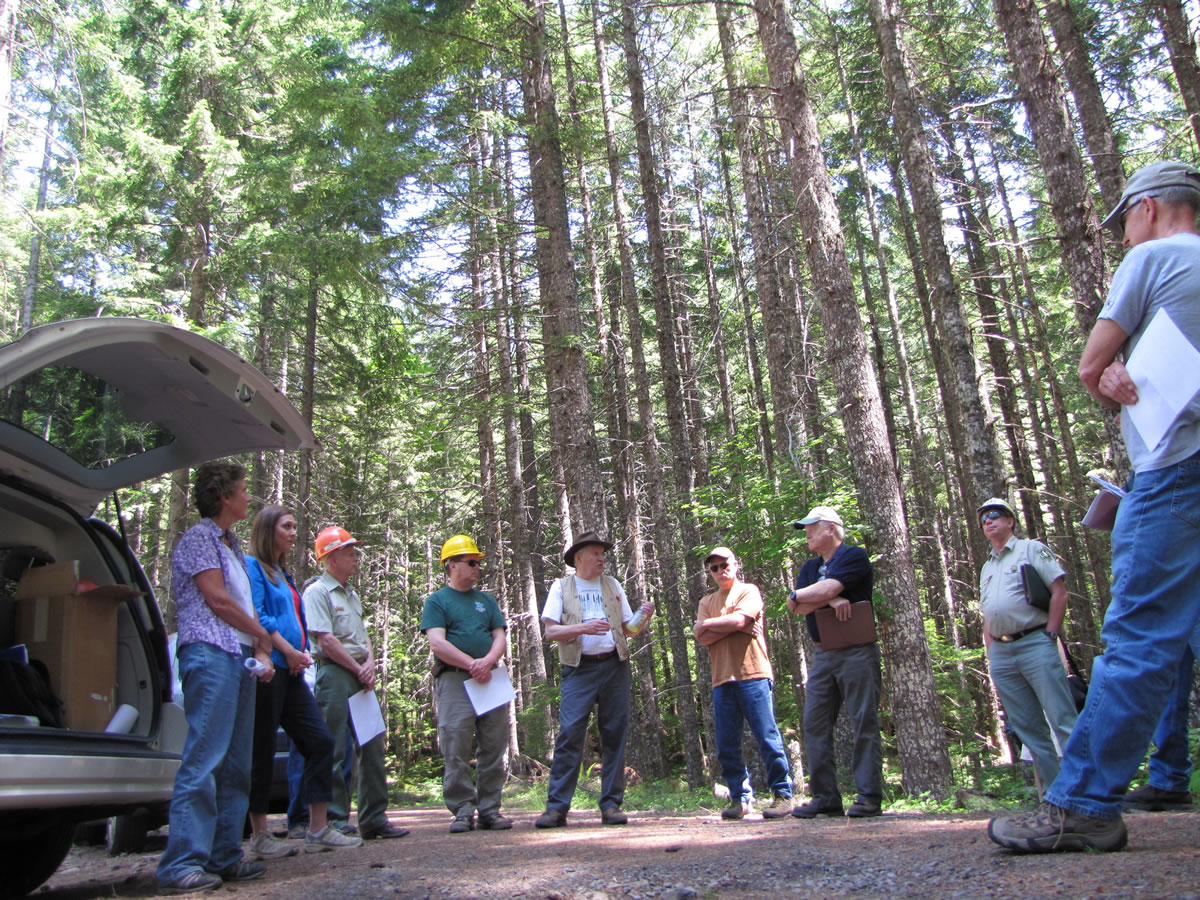STEVENSON — A clear consensus emerged in the room: Federal forest management needs to change, and the communities tied to those lands need to see better results.
For many, that means larger timber harvests. That’s easier said than done.
During a Tuesday roundtable discussion led by U.S. Rep. Jaime Herrera Beutler, R-Camas, and U.S. Forest Service Chief Tom Tidwell, a collection of leaders described the plight of rural areas hit hard by a sharp decline in timber sales over the past two decades. Few places have been hit harder than Skamania County, roughly 80 percent of which is covered by the Gifford Pinchot National Forest.
“It is amazing, the economic impact this community has felt,” Herrera Beutler said during the gathering in Stevenson.
Much of the conversation focused on the 1994 Northwest Forest Plan. Along with spotted owl habitat designation and other environmental rules, the plan transformed forest management and curtailed logging on federal lands, including the Gifford Pinchot forest. Large swaths of land became off-limits.
In 1990, the 1.3-million-acre Gifford Pinchot forest generated about 689 million board-feet of timber sales. In 2012, it was down to 33 million board-feet.
Skamania County commissioners have asked federal leaders, including Herrera Beutler, to help tip the balance in their favor, in part by requiring the forest service to harvest more of its timber, thereby generating more tax revenue for the county. Recent timber sales from the Gifford Pinchot forest are actually far below what’s allowed under the Northwest Forest Plan.
Tidwell said the forest service recognizes it needs to do more work on its lands. But he noted a hard reality: His agency’s budget is stretched thin, and the forest service simply doesn’t have the resources to carry out all of the work it wants to. And that problem is not unique to the Northwest, Tidwell said.
In just the past decade, the forest service has steered an additional $500 million toward wildfire suppression, Tidwell said. Meanwhile, its overall budget has remained flat. As a result, other forest service programs have been reduced or cut, he said.
Though not everyone in the room agreed, Tidwell said the Northwest Forest Plan is working, even if it’s not working as well as many would like. Taking on a rewrite or revision of the plan would drain additional forest service resources, and likely result in a lengthy review or litigation, he said.
But some leaders, already facing huge service cuts under the plan, indicated they don’t feel like they have much left to lose. The plan hasn’t delivered the results it promised, they said.
“The Northwest Forest Plan was developed out of political necessity, not out of science,” said Paul Pearce of the National Forest Counties and Schools Coalition. “It was very much a political document.”
“Honestly, I would set fire to it and start over,” said Pearce, a former Skamania County commissioner.
After the meeting, Herrera Beutler joined a group on a tour of the Gifford Pinchot forest for an up-close look at various forest practices. At the first stop, the group parked in a decades-old stand of trees. One side of the road had been thinned; the other hadn’t.
Herrera Beutler earlier raised the possibility of pursuing demonstration projects in the forest as a way to affirm new practices to improve forest health and economic productivity. Even if the Northwest Forest Plan remains unchanged, the congresswoman said, she’d like to see active management and harvests approach the levels allowed under the law and ease the hardship of the people who depend on them.
“It’s not just a policy decision,” Herrera Beutler said. “It’s a humanitarian decision. It’s a social justice decision.”
Eric Florip: 360-735-4541; http://twitter.com/col_enviro; eric.florip@columbian.com




